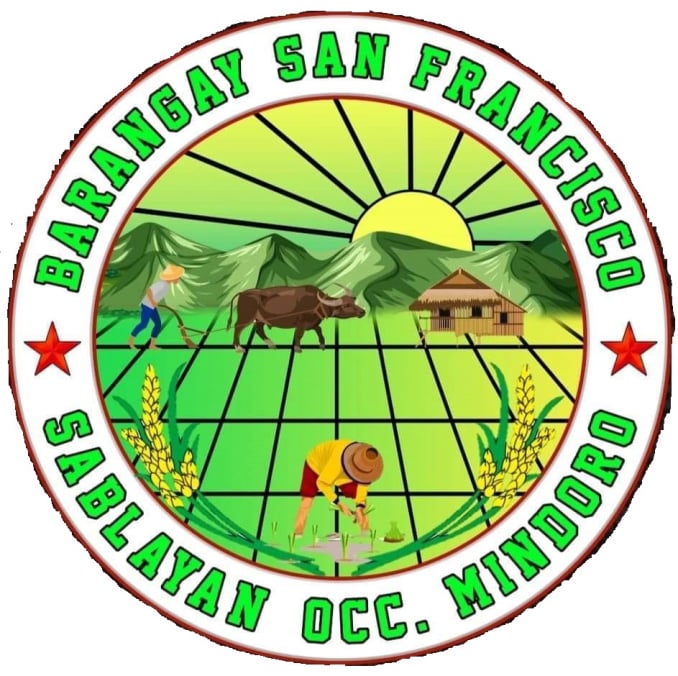Barangays > San Francisco

|
Brief History |
The indigenous people belonging to the Alangan tribe were the first inhabitants of this place. They built their huts around the lake found here which they called Lalaguna. Hunting, fishing and the kaingin system of agriculture were their sources of livelihood. Since a kind of grass locally known as bacong-bacong grew abundantly in the area, they called their settlement as Cabacungan.
Aside from the lake, a small river could be found in Cabacungan. The tamaraw and other wild animals quenched their thirst here, thus, the river was called Turawan by the indigenous people.
After World War II, a great number of families of farmers from other provinces of the Philippines came to Cabacungan. They occupied the kaingin of the Alangan. Being peace loving people, the indigenous people transferred to the mountains. The new arrivals cleared the forests, cultivated it and turned it into ricefields and cornfields.
The settlement grew and Cabacungan became a sitio of San Vicente. After a few years, a member of the barrio council named Francisco Sarzate tried his best to elevate the sitio to the status of a barrio. When it was realized in 1970, the residents of Cabacungan showed their appreciation by registering San Francisco as the official name of their barrio.
Another benevolent individual of San Francisco, Carlos Quiton, donated the land where the classrooms of the elementary school were constructed. When he died, some residents proposed to change the name of their barrio to San Carlos. However, the proposal was turned down by the municipal council for aside from being its registered name, San Francisco was already widely known by people not only from Sablayan but also from other places.
After a few years, the number of houses in San Francisco increased. Building concrete houses was not costly for gravel and sand abound in this barrio. The tax that the barrio officials charged for every truckload of gravel & sand hauled by contractors from the riverbed within the jurisdiction of their community constitutes the main source of fund being spent for the projects of San Francisco.
Every summer season, buses and passenger jeeps going to Mamburao from Sablayan and other municipalities at the southern part of Occidental Mindoro, passed by San Francisco. The frequent passage of land transportation vehicles greatly helped the farmers in marketing their products. It also contributed to the progress of the barrio now called a barangay.
During martial law period, the road and bridges in the barrio were improved. The National Irrigation Administration (NIA) constructed an irrigation system for the ricefields of the farmers. As a result, production of palay and corn increased.
Since San Francisco is located near Patrick River, when a wide area of the municipality of Sablayan was flooded in 1989, a great portion of this barangay was submerged in water. The ricefields of the farmers were heavily damaged. Some families evacuated to higher grounds. Nevertheless, after the calamity, the residents strived hard to recover what they lost.
Through the efforts of its local officials and the cooperation of the people in the community, the barangay at present has an improved plaza, a concrete stage, multi-purpose pavement, barangay hall and day care center.


